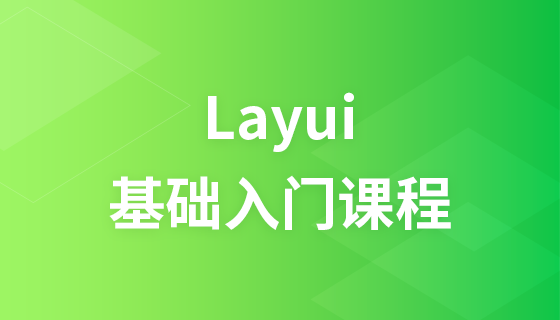CSS 伪元素
CSS 伪元素
CSS伪元素是用来添加一些选择器的特殊效果。
语法
伪元素的语法:
CSS类也可以使用伪元素:
:first-line 伪元素
"first-line" 伪元素用于向文本的首行设置特殊样式。
在下面的例子中,浏览器会根据 "first-line" 伪元素中的样式对 p 元素的第一行文本进行格式化:
<!DOCTYPE html>
<html>
<head>
<style>
p:first-line
{
color:#ff0000;
font-variant:small-caps;
}
</style>
</head>
<body>
<p>您可以使用:线伪元素添加特殊效果给第一行文本。</p>
</body>
</html>运行程序尝试一下
注意:"first-line" 伪元素只能用于块级元素。
注意: 下面的属性可应用于 "first-line" 伪元素:
- font properties
- color properties
- background properties
- word-spacing
- letter-spacing
- text-decoration
- vertical-align
- text-transform
- line-height
- clear
:first-letter 伪元素
"first-letter" 伪元素用于向文本的首字母设置特殊样式:
实例
<!DOCTYPE html>
<html>
<head>
<meta charset="utf-8">
<title>php中文网(php.cn)</title>
<style>
p:first-letter
{
color:#ff0000;
font-size:xx-large;
}
</style>
</head>
<body>
<p>You can use the :first-letter pseudo-element to add a special effect to the first character of a text!</p>
</body>
</html>运行程序尝试一下
注意: "first-letter" 伪元素只能用于块级元素。
注意: 下面的属性可应用于 "first-letter" 伪元素:
- font properties
- color properties
- background properties
- margin properties
- padding properties
- border properties
- text-decoration
- vertical-align (only if "float" is "none")
- text-transform
- line-height
- float
- clear
伪元素和CSS类
伪元素可以结合CSS类:
<p class="article">A paragraph in an article</p>
上面的例子会使所有 class 为 article 的段落的首字母变为红色。
Multiple Pseudo-elements
可以结合多个伪元素来使用。
在下面的例子中,段落的第一个字母将显示为红色,其字体大小为 xx-large。第一行中的其余文本将为蓝色,并以小型大写字母显示。
段落中的其余文本将以默认字体大小和颜色来显示:
实例
<!DOCTYPE html>
<html>
<head>
<meta charset="utf-8">
<title>php中文网(php.cn)</title>
<style>
p:first-letter
{
color:#ff0000;
font-size:xx-large;
}
p:first-line
{
color:#0000ff;
font-variant:small-caps;
}
</style>
</head>
<body>
<p>You can combine the :first-letter and :first-line pseudo-elements to add a special effect to the first letter and the first line of a text!</p>
</body>
</html>运行程序尝试一下
CSS - :before 伪元素
":before" 伪元素可以在元素的内容前面插入新内容。
下面的例子在每个 <h1>元素前面插入一幅图片:
实例
<!DOCTYPE html>
<html>
<head>
<meta charset="utf-8">
<title>php中文网(php.cn)</title>
<style>
h1:before {content:url(https://img.php.cn/upload/course/000/000/006/5809800b44336872.jpg);}
</style>
</head>
<body>
<h1>This is a heading</h1>
<p>The :before pseudo-element inserts content before an element.</p>
<h1>This is a heading</h1>
<p><b>注意:</b>仅当 !DOCTYPE 已经声明 IE8 支持这个内容属性</p>
</body>
</html>运行程序尝试一下
CSS - :after 伪元素
":after" 伪元素可以在元素的内容之后插入新内容。
下面的例子在每个 <h1> 元素后面插入一幅图片:
实例
<!DOCTYPE html>
<html>
<head>
<meta charset="utf-8">
<title>php中文网(php.cn)</title>
<style>
h1:after {content:url(https://img.php.cn/upload/course/000/000/006/5809800b44336872.jpg);}
</style>
</head>
<body>
<h1>This is a heading</h1>
<p>The :after pseudo-element inserts content after an element.</p>
<h1>This is a heading</h1>
<p><b>注意:</b>仅当!DOCTYPE 已经声明 IE8支持这个内容属性.</p>
</body>
</html>运行程序尝试一下
所有CSS伪类/元素
| 选择器 | 示例 | 示例说明 |
|---|---|---|
| :link | a:link | 选择所有未访问链接 |
| :visited | a:visited | 选择所有访问过的链接 |
| :active | a:active | 选择正在活动链接 |
| :hover | a:hover | 把鼠标放在链接上的状态 |
| :focus | input:focus | 选择元素输入后具有焦点 |
| :first-letter | p:first-letter | 选择每个 元素的第一个字母 |
| :first-line | p:first-line | 选择每个 元素的第一行 |
| :first-child | p:first-child | 选择器匹配属于任意元素的第一个子元素的 <]p> 元素 |
| :before | p:before | 在每个 元素之前插入内容 |
| :after | p:after | 在每个 元素之后插入内容 |
| :lang(language) | p:lang(it) | 为 元素的lang属性选择一个开始值 |
















蒂亚梵思·礼服馆·如皋吾悦东门
伪类和伪元素啥区别?
6年前 添加回复 0